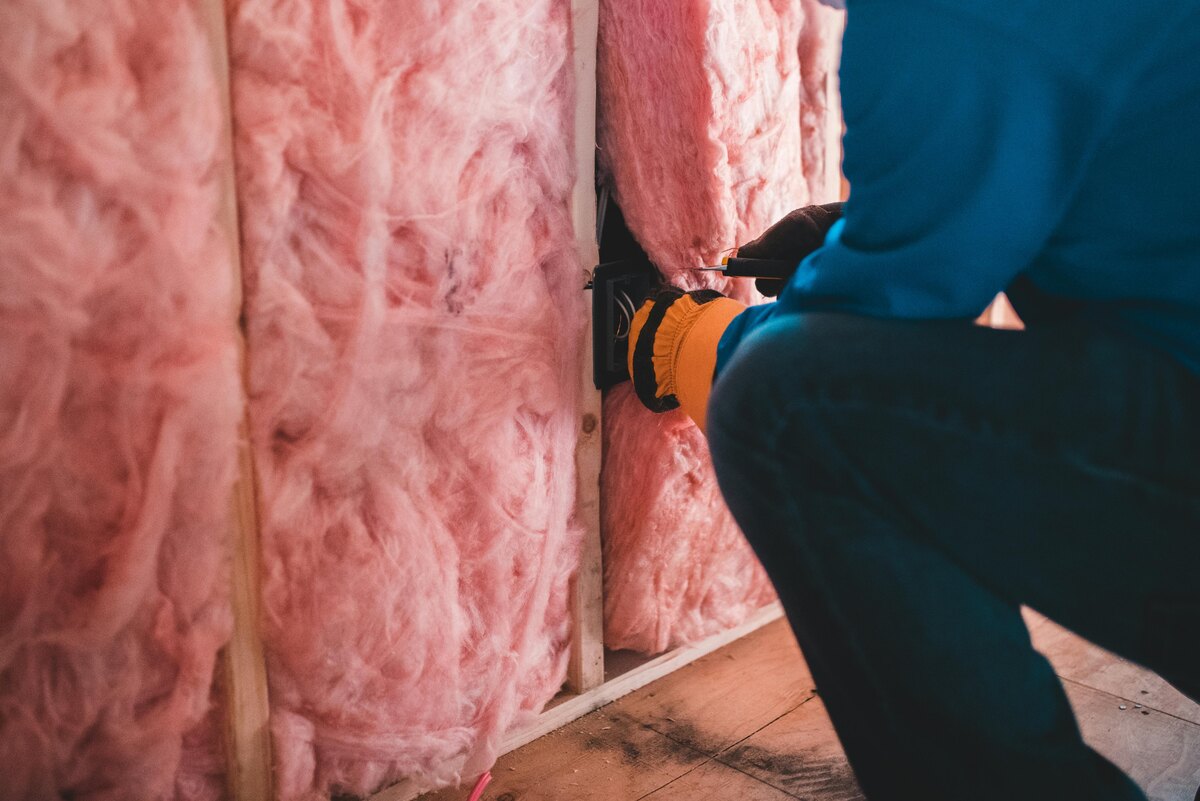The Key to Comfort, Efficiency, and Sustainability
Insulation is an essential component in maintaining a comfortable, energy-efficient, and environmentally friendly home or building. It plays a crucial role in regulating temperature, reducing energy costs, improving indoor air quality, and minimizing a building’s carbon footprint. Whether it's in the walls, attic, floors, or windows, insulation helps prevent heat transfer, keeping the warmth in during winter and the cool air inside during summer. In this article, we'll explore the importance of insulation, the types available, the benefits it provides, and tips for choosing the right insulation for your needs.

What is Insulation?
Insulation refers to materials used in construction to reduce the flow of heat, sound, or electricity between two areas. In homes and buildings, the primary purpose of insulation is to control the temperature and energy efficiency. It works by trapping air in tiny pockets, slowing down the transfer of heat between the interior and exterior of a building. In addition to thermal insulation, some materials also provide soundproofing and fire resistance, enhancing the overall performance of a building.
Types of Insulation
Fiberglass insulation is one of the most widely used insulation materials. It comes in batts, rolls, and loose-fill form. Made from fine glass fibers, it is an excellent thermal insulator and is also fire resistant. Fiberglass insulation is typically used in walls, attics, floors, and ceilings. It is affordable, non-flammable, and relatively easy to install.
Pros: Inexpensive, widely available, effective at insulating, fire resistant.
Cons: It can cause irritation to the skin, eyes, and lungs if not handled properly. It is not effective in moist areas, as it can lose its insulating properties when wet.
Spray foam insulation is a liquid form that expands and hardens into a solid foam when applied. It creates an airtight seal and is particularly effective in hard-to-reach areas, such as around pipes and wires. Spray foam offers both thermal and sound insulation and has a high R-value (a measure of insulation effectiveness).
Pros: Superior air sealing, reduces drafts, high R-value, ideal for irregular spaces.
Cons: Expensive, requires professional installation, can cause odors during installation.
Cellulose insulation is made from recycled paper products and treated with fire retardants. It is often used as loose-fill insulation in attics, walls, and floors. Cellulose is a green alternative to traditional insulation materials and is made from renewable resources.
Pros: Environmentally friendly, good for soundproofing, made from recycled materials.
Cons: Can settle over time, reducing its insulating effectiveness. It may also attract pests if not treated properly.
Cotton insulation, also known as denim insulation, is made from recycled cotton fabric (usually from old denim jeans). It is a natural, sustainable alternative to fiberglass and can be used in walls, attics, and floors. Cotton insulation is non-toxic, easy to handle, and offers good soundproofing qualities.
Pros: Eco-friendly, non-toxic, safe to handle, effective at controlling moisture.
Cons: More expensive than traditional insulation, not as common.
Mineral wool, or rock wool, is made from natural rock or basalt. It is a durable and fire-resistant material that offers excellent soundproofing and thermal insulating properties. Mineral wool is commonly used in walls, ceilings, and attics.
Pros: Fire resistant, water-resistant, excellent for soundproofing, mold resistant.
Cons: More expensive than fiberglass, can be heavier and harder to install.
Rigid foam board insulation comes in panels and is made from materials such as polystyrene, polyisocyanurate, or polyurethane. It is highly effective in areas like basements, foundations, and exterior walls. Rigid foam board offers a high R-value per inch of thickness and is moisture resistant.
Pros: High R-value, moisture resistant, durable.
Cons: Can be more expensive than fiberglass, may require professional installation.

Contact Us
The Importance of Insulation
Energy Efficiency
Insulation improves energy efficiency by preventing heat loss in winter and blocking heat in summer. It reduces strain on HVAC systems, lowering energy use and utility costs. It also helps maintain consistent indoor temperatures all year long.
Comfort
Insulation keeps indoor temperatures consistent, eliminating drafts and cold spots in the winter and helping rooms stay cooler in the summer. It also offers soundproofing benefits, making it ideal for creating quieter living spaces like bedrooms or home offices.
Environmental Impact
Reducing energy consumption through insulation helps cut greenhouse gas emissions. This decreases reliance on fossil fuels used for heating and cooling, supporting efforts toward sustainability and environmental conservation.
Health and Safety
Insulation can help regulate indoor humidity and reduce the risk of mold and mildew growth, which are known to cause allergies and respiratory issues. Certain types of insulation also offer fire-resistant properties, enhancing the overall safety of a building.
Cost Savings
While insulation requires an upfront investment, it typically leads to long-term savings. Homeowners can reduce heating and cooling costs by up to 20% annually, depending on their location and the insulation material used.
Improved HVAC Performance
By reducing the workload on heating and cooling systems, insulation helps extend the life of HVAC equipment. This means fewer repairs, less maintenance, and a longer lifespan for your system.
Increased Property Value
Energy-efficient features like insulation are attractive to homebuyers. A well-insulated home often appraises higher and can stand out in competitive real estate markets as a more comfortable and cost-efficient option.
Moisture Control
Insulation helps protect your home from moisture intrusion, especially in attics, basements, and crawl spaces. This reduces the risk of structural damage and costly repairs caused by water infiltration and condensation.

